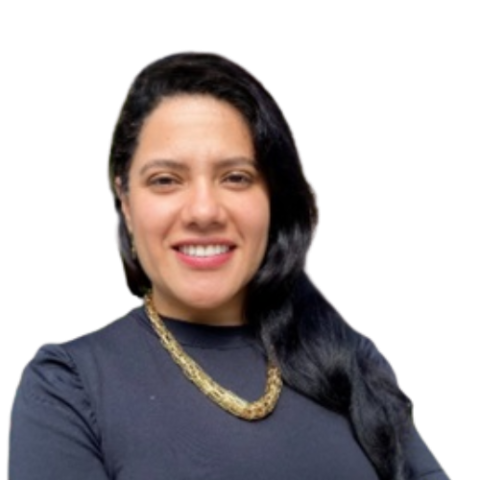Connecting Design and Resilience
Session 1 - Resilience at Scale: Connecting Human Wellbeing with Planetary Health
The building industry has been working on sustainability since LEED began, yet we still contribute almost 40% of the global greenhouse gas emissions every year. The COVID-19 pandemic elucidated the significant role the built environment plays in creating healthy buildings and resilient communities. How can we leverage this inflection point to promote people and planet centric designs? We first must understand the specific risks and opportunities for a project before designing to address the unique social and environmental challenges.
This session is about breaking big problems down into smaller pieces by using publicly available tools to conduct vulnerability assessments in the early stages of a project when these issues are most easily addressed. Then, the session will utilize design thinking, prioritize design strategies for specific project challenges, and identify synergies between key concepts.
Taking a systems-thinking approach and "zooming out" to understand how our assets fit in the greater community and ecosystem is a critical component of assessing these risks. Many social and environmental challenges are systemic and ongoing, but there always is new data that can inform how we respond to them through design. Existing building stock needs to be evaluated for upgrades that might offer the largest impact. To meet these challenges head on, we first must define them as they relate to specific locations and determine where adaptation is most appropriate.
There are several tools to assist.
When we look at climate-specific risks, especially at a large scale (campus or community, for example), one strategy is to take multiple datasets and overlay them to triangulate the most pressing concerns. Using multiple resources from third-party sources, such as NOAA, EPA, NRDC, and others allows us to benchmark the data against groups to ensure we are focused on the right topics. In addition, walking the end user through the S-E-E lenses (social, environmental, and economic) identifies cascading consequences that can pinpoint areas for design intervention.
PRECEDE (Public Repository to Engage Community and Enhance Design Equity) is a transformative tool for architects and designers, providing streamlined access to a wealth of health, socioeconomic, and environmental data. This open-source dashboard enables design professionals to make informed decisions by pulling in data from sources like the U.S. Centers for Disease Control and Prevention, U.S. Environmental Protection Agency, and U.S. Census Bureau. The platform empowers users to better understand site-specific health concerns, fostering data-driven design choices that can improve community health outcomes.
In this interactive session, you'll learn how teams work through identifying climate, social, and health vulnerabilities and then designing solutions to address them. An overview of the process will lead to a series of hands-on exercises for prioritizing and addressing varying types of climate risk.
Learning Objectives:
- Upon completion, participants will be able to identify third-party sources for climate risk predictions that can be used in assessing real estate decisions and risks to existing property.
- Upon completion, participants will be able to connect specific consequences of climate risks to spaces of all scales to understand impacts of climate change and human health and what actions might be needed to mitigate those risks.
- Participants will gain hands-on experience navigating the PRECEDE platform to access critical data from public health databases, such as those from the CDC, EPA, and Census Bureau, and learn how to apply this information in design projects.
- Participants will analyze how leveraging site-specific health and environmental data through PRECEDE can lead to more informed design decisions, improving health outcomes and fostering design equity in diverse communities.
Session 2 - Harnessing AIA Resources to Drive Resilience in the Built Environment
The American Institute of Architects (AIA) provides a wealth of resources to support architects and allied professionals in designing resilient, sustainable, and adaptive built environments.
This session explores how AIA’s tools, guidelines, and initiatives empower practitioners, policymakers, and technologists to address pressing challenges in resilience, including climate adaptation, functional recovery, and community engagement.
Participants will gain insight into the Resilience Design Toolkit, a comprehensive guide for integrating resilience strategies into architectural practice, and the AIA Disaster Assistance Program, which equips architects with skills to respond effectively to natural disasters. The session also will showcase case studies from the AIA Resilience and Climate Adaptation programs, offering practical applications of these resources in real-world projects.
Whether you are a leader shaping policy frameworks, practitioner focused on retrofitting for resilience, or technologist exploring innovative materials and design strategies, this session provides actionable strategies to incorporate resilience into your work. Join us to discover how AIA resources can help build thriving, resilient communities.
Learning Objectives:
- Identify key AIA resources that support resilience-focused design, construction, and planning in the built environment.
- Understand how to apply the Resilience Design Toolkit to integrate climate adaptation and community resilience into projects.
- Explore case studies demonstrating the successful implementation of AIA resilience initiatives in various contexts.
- Develop strategies to collaborate with multidisciplinary teams and stakeholders using AIA resources to enhance resilience outcomes.



